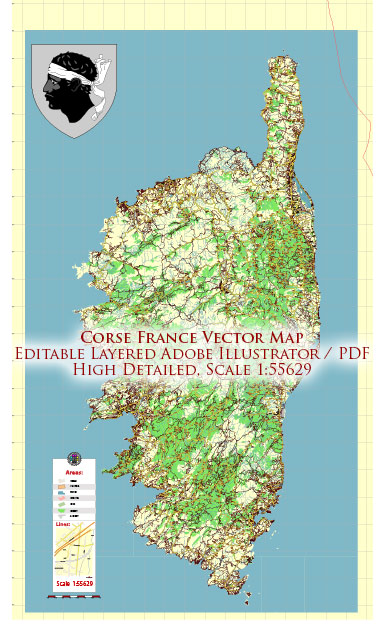Corsica, a beautiful island in the Mediterranean Sea, has a rich geological history that has played a significant role in shaping its rugged landscape. The island’s geology is a result of complex geological processes, including the collision of tectonic plates and subsequent erosion. Here is a brief description of the geology of Corsica:
- Tectonic Setting: Corsica is located in a tectonically active region where the African and European plates converge. This convergence has led to the formation of the Alpine mountain range, of which Corsica is a part.
- Corsican Mountain Range: Corsica is often referred to as the “Mountain in the Sea” due to its mountainous terrain. The island is dominated by the Corsican mountain range, which is an extension of the Alps. These mountains are primarily composed of granite and schist, two types of metamorphic rocks that have been significantly uplifted and folded by tectonic forces.
- Granite Intrusions: The granite found in Corsica is the result of molten rock (magma) that intruded into the Earth’s crust and cooled slowly to form large plutonic masses. These granitic intrusions can be seen throughout the island, contributing to its jagged and dramatic landscape.
- Schist and Metamorphic Rocks: Schist is a type of metamorphic rock found in Corsica that has been formed from the alteration of pre-existing rocks under high pressure and temperature conditions. These rocks have been folded and faulted due to tectonic activity.
- Coastal Features: Corsica’s coastline is marked by cliffs, rocky promontories, and beautiful bays. The rugged coastal landscape is a result of the interaction between the sea and the resistant granite and schist rocks.
- Volcanic History: Corsica also has a history of volcanic activity, though it is less prominent than the primary geological features mentioned above. Some areas of the island, particularly in the northeast, have volcanic rocks, including basalt and volcanic tuffs, which are remnants of ancient volcanic eruptions.
- Erosion and Karst Topography: Erosion has played a significant role in shaping Corsica’s landscape. The island features karst topography, characterized by limestone formations that have been sculpted by dissolution and erosion. This has led to the creation of caves, sinkholes, and striking limestone cliffs.
In summary, Corsica’s geology is marked by a mix of granite, schist, and metamorphic rocks that have been shaped by tectonic forces, erosion, and, in some areas, volcanic activity. The result is a diverse and visually stunning landscape that includes towering mountains, rugged coastlines, and unique karst formations, making Corsica a geologically fascinating and picturesque island.


 Author: Kirill Shrayber, Ph.D.
Author: Kirill Shrayber, Ph.D.